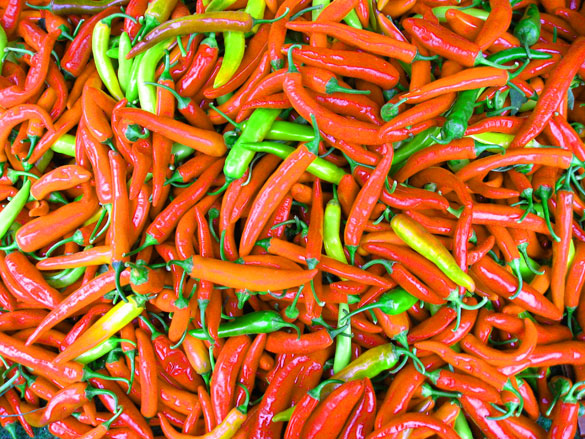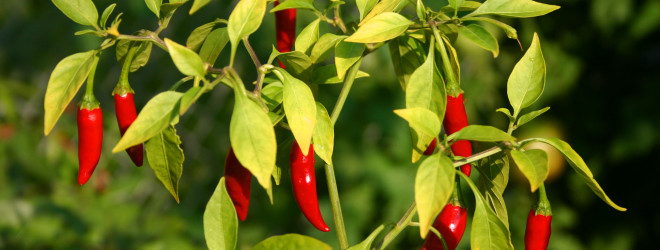A few weeks ago I had a visit from a family who brought their senior-aged mother to see me, complaining of a relentless nausea. No cause could be ascertained, and she had already spent a couple days in the hospital on IV, but with no respite. When I examined her, the poor lady was very pale and cold, barely coherent, and was listing in her chair, almost falling over. Her family was obviously very worried, but I was confident that I could restore her rather quickly, my optimism based on a little remedy I discovered about 15 years ago. While she and her family waited, I excused myself and made some up. I measured out a dose and diluted it in warm water, gave it to the mother, and then continued talking to the family about ways they could restore her electrolytes and digestion. Within a minute or so, the mother’s pallor changed notably, and she began to sit upright, and answer questions easily. Her eyes were clearer and brighter, and by the time she left a few minutes later, she easily walked out the door on the arm of her daughter.
I knew this remedy would likely benefit her because I have had occasion to test it many times. The first time I found this remedy was when I was searching for something I could give a young female patient that had suffered from intractable nausea for an entire year, as a complication of appendix surgery. She literally could not get out of bed, and had not attended school in the last nine months. Her mother was at her wit’s end, and told me she had tried everything: pharmaceuticals, herbal remedies, homeopathics and acupuncture – nothing had worked so far.
During this period I was also clinical director at a herbal college, and was teaching a course on Physiomedicalism, an early evolute of Western herbal medicine in North America. It was a practice derived from the techniques of a folk herbalist named Samuel Thomson, who is notable not only as the first multi-level marketer in North America, but because he introduced several herbs into the materia medica, including lobelia (Lobelia inflata) and cayenne (Capsicum spp.). For Thomson, cayenne in particular was a herb that was unmatched when it came to holding the “heat” of the stomach, synonymous with good appetite and digestion. In Ayurveda, the stomach is the primary site of kapha, or ‘phlgem’, and when the cold, heavy and congesting qualities of kapha increase, there is a commensurate decline in appetite and digestion. Think of trying to burn wet leaves: instead of heat (digestion), all we get is smoke (nausea). Thus nausea is essentially a disease of kapha, and the primary method for resolving this is to burn away the mucus and congestion by activating the digestive fire. In this way, cayenne can be used for any type of kapha issue, including viral rhinitis and influenza, where the symptoms are characterized by nausea, coldness and mucus congestion. For active fever, however, this is remedy is too heating and should be avoided in favour of gentle diaphoretics such as yarrow, catnip, or elder flower tea.
 While cayenne was Thomson’s standby for digestion, I explored further and came across a specific formula in King’s American Dispensatory called “Anti-emetic drops“, comprised of apple cider vinegar, cayenne, salt and water. I decided to try it out and mixed up a batch. I gave it to this young woman and her mother, and within a day I got a report back that the nausea was gone. Cautiously optimistic, I suggested she continue, and let me know how she was doing in a few days. A week later I heard from her mother that she was back at school, hanging out with her friends, now living the life she missed out on for the last year. Although I never saw them again, I received a letter from her mother several years later, telling me that her daughter had finished university – something she said wouldn’t have been possible without my help, and of course, the help of this very useful remedy.
While cayenne was Thomson’s standby for digestion, I explored further and came across a specific formula in King’s American Dispensatory called “Anti-emetic drops“, comprised of apple cider vinegar, cayenne, salt and water. I decided to try it out and mixed up a batch. I gave it to this young woman and her mother, and within a day I got a report back that the nausea was gone. Cautiously optimistic, I suggested she continue, and let me know how she was doing in a few days. A week later I heard from her mother that she was back at school, hanging out with her friends, now living the life she missed out on for the last year. Although I never saw them again, I received a letter from her mother several years later, telling me that her daughter had finished university – something she said wouldn’t have been possible without my help, and of course, the help of this very useful remedy.
Here is the recipe for King’s Anti-emetic Drops (approximated, using kitchen measurements):
- 1/2 ounce (15 g) of powdered cayenne
- 1/4 tsp (2 g) of salt
- 1 cup (250 mL) apple cider vinegar
- 1 cup (250 mL) water
Dose: One tablespoon, given as often as required.
The original fire cider?
Lately there has been a bit of a furor over a company that has trademarked the name “fire cider”, which is a combination of vinegar, habanero peppers, and other herbs. Perhaps because I live in Canada, I had never heard of the term “fire cider”, although I am obviously familiar with the ingredients. It seems that some folks are irritated that the company has taken a folk remedy and claimed it as their own. As we can see, the basic formula goes back more than a century, mentioned in the 1898 edition of King’s American Dispensatory, so it is hardly unique. Patents are used to protect inventions, whereas trademarks are used to protect marketing terms, such as product names. And unlike patents, which are supposedly novel inventions, it doesn’t matter how stupid an idea is to get a trademark to protect it. You just need to be first.
While the trademark application itself seems weak and could be challenged, it’s important to point out that there is no limitation on anyone making “fire cider” and calling it such, just as long as they don’t also sell it as “fire cider”. However, I can’t see how this little company is going to be hiring big city lawyers to put small time herbalists out of business at their local farmer’s market. Particularly if everyone does it: bring on World Wide Fire Cider Making Day!
Anyway, in the context of our free market, capitalist economy, it’s hard to fault the company: this is the way the system works, for better or for ill. It was probably a bad business decision on their part not to pick a unique name. Fortunately, herbalists are generally not proprietary folk, so regardless of the name, this and similar remedies should continue to remain part of the commons for a long time to come.


